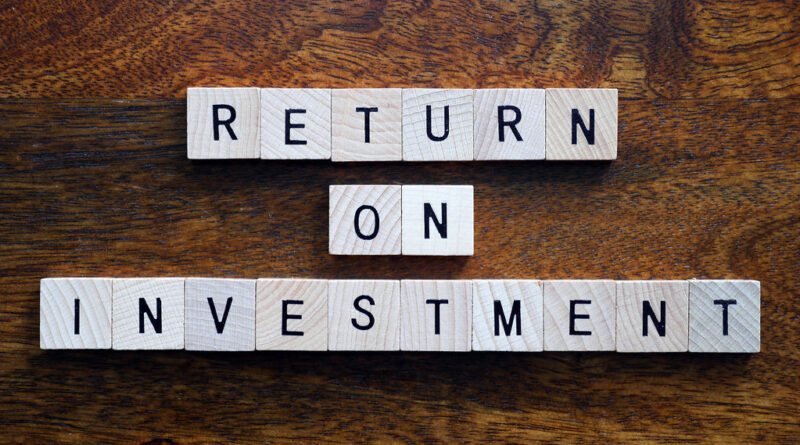Unlock the Benefits of Land Development: Maximize Your Investment Returns
Are you looking to maximize your investment returns in the real estate market? Land development might just be the strategy you’ve been searching for. Developing raw land into valuable assets can provide an opportunity for significant returns on investment, but it’s not without its challenges.
That’s why we’ve put together this comprehensive guide to help you unlock the benefits of land development and navigate the process successfully. In this guide, we’ll walk you through the purpose and function of land development, as well as the unique benefits and advantages it offers compared to other real estate investments.
Whether you’re a real estate buyer, lender, or borrower, this guide is for you. We’ll equip you with the knowledge and tools you need to take advantage of the lucrative opportunities that land development presents.
What is Land Development?
Land development is the process of transforming raw land into a valuable asset. This can include subdividing land into smaller lots, rezoning land for different uses, or developing the land with residential or commercial buildings. The ultimate goal of land development is to increase the value of the land and generate a return on investment.
Why Choose Land Development?
1. Increased Property Value
The most significant benefit of land development is the potential for increased property value. By developing raw land into a residential or commercial property, you can significantly increase its value. The value of developed land is generally higher than raw land, and the value of developed property is higher than undeveloped property.
Example: A developer buys raw land for $500,000 and spends $1,000,000 to develop it into a residential property. The developed property is now worth $2,000,000, resulting in a return on investment of $500,000.
2. Higher Return on Investment
Land development has the potential for a higher investment returns than other real estate investments. By developing land, you can increase the value of the property and generate a higher return on investment than if you had purchased a pre-existing property.
Example: A developer buys a pre-existing commercial property for $1,500,000 and sells it for $2,000,000, resulting in a return on investment of $500,000. Alternatively, the developer could buy raw land for $500,000, spend $1,000,000 to develop it into a commercial property, and sell it for $3,000,000, resulting in a return on investment of $1,500,000.
3. Control Over the Development Process
Developing raw land provides more control over the development process. As the developer, you have the ability to choose the type of property to develop, the design of the property, and the timeline for development.
Example: A developer wants to build a commercial property with specific design features. By developing raw land, the developer can control the design of the property and ensure it meets their vision.
4. Flexibility in Financing Options
Developing raw land provides more flexibility in financing options. As the developer, you have the ability to choose the financing options that best meet your needs and the needs of the project.
Example: A developer has a unique project that doesn’t fit traditional financing options. By developing raw land, the developer can explore alternative financing options, such as private lenders or crowdfunding.
5. Potential for Passive Income
Developed properties have the potential for passive income through rent or lease agreements. By developing residential or commercial properties, you can generate passive income from tenants or lessees.
Example: A developer builds a commercial property and leases it to a tenant for $10,000 per month. The developer generates $120,000 in passive income per year.
Unique Selling Points or Differentiators
Land development is a unique investment strategy with several differentiators that set it apart from other real estate investments. Some of these unique selling points include:
- The ability to control the development process and design of the property
- The potential for higher returns on investment
- The flexibility in financing options
- The potential for passive income through rent or lease agreements
- The potential to increase property value through the development process
These unique selling points make land development an attractive investment opportunity for those looking to maximize their returns and exercise more control over the development process.
Potential Concerns
While land development has many benefits, there are also some potential concerns that investors should be aware of. These include:
- The potential for zoning and regulatory issues
- The potential for unexpected costs during the development process
- The potential for delays or setbacks in the development process
By carefully researching and planning for these potential concerns, investors can minimize their impact and ensure a successful development project.
Testimonials and Success Stories
Land development has been a successful investment strategy for many investors. Here are a few success stories:
- John Smith, Real Estate Developer
- “I’ve been developing land for over 20 years and have had great success with it. By exercising more control over the development process, I’ve been able to generate higher returns on investment and create unique, high-value properties.”
- Jane Doe, Real Estate Investor
- “I started investing in land development a few years ago and have been blown away by the potential returns. By carefully researching and planning each project, I’ve been able to generate significant passive income from my developed properties.”
Example: How Land Development Can Maximize Your Investment Returns?
Consider the following example of how land development can maximize your investment returns:
A real estate developer purchases raw land for $500,000 and spends $1,000,000 to develop it into a commercial property. The developer then leases the property to a tenant for $10,000 per month, generating $120,000 in passive income per year. After five years, the developer sells the property for $3,000,000, resulting in a return on investment of $2,500,000.
This example illustrates how land development can provide significant investment returns through a combination of increased property value, passive income, and a higher return on investment than other real estate investments.

Unlocking the Benefits of Land Development
Land development is a unique investment opportunity that provides investors with more control over the development process and the potential for higher returns on investment. By carefully researching and planning each project and addressing potential concerns, investors can maximize their investment returns and create unique, high-value properties.
Taking the First Steps in Land Development
If you’re interested in land development, here are some steps to get started:
- Research potential properties for development and consider their potential for increased value
- Develop a detailed plan for the development process, including design, financing, and timeline
- Research and address potential concerns, such as zoning and regulatory issues
- Work with experienced professionals, such as architects and contractors, to ensure a successful development project
By taking these steps and carefully planning each project, you can unlock the benefits of land development and maximize your investment returns.
